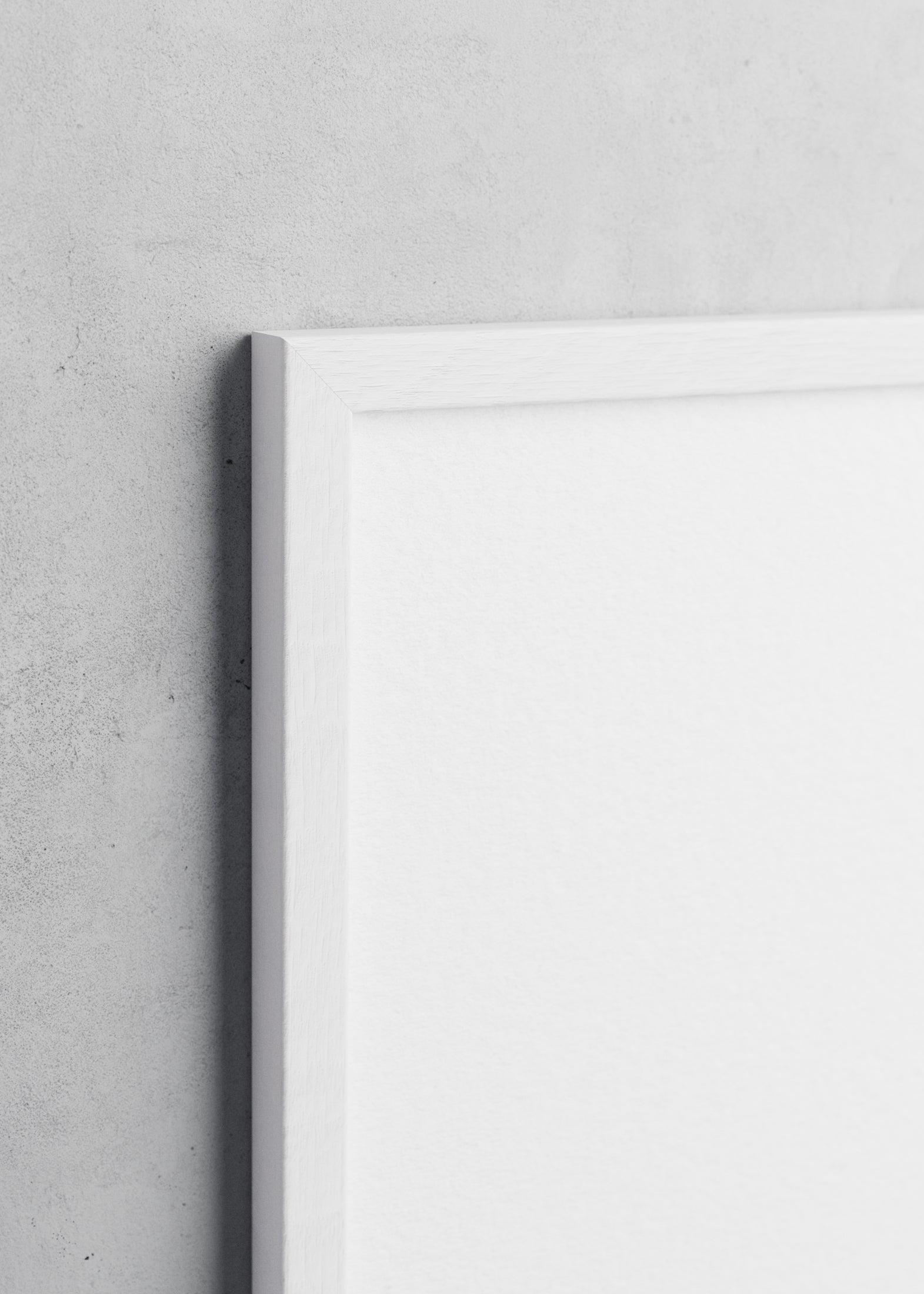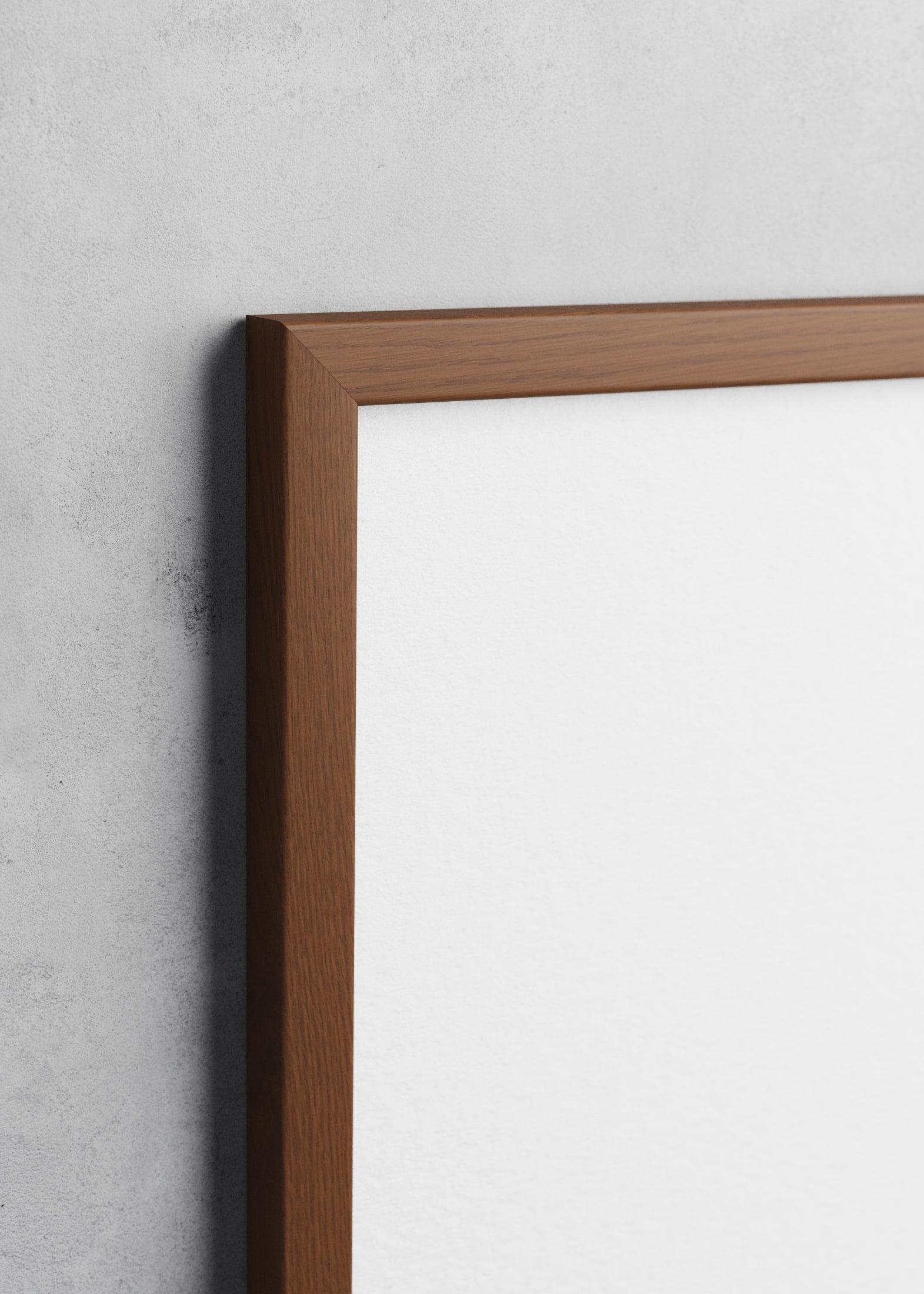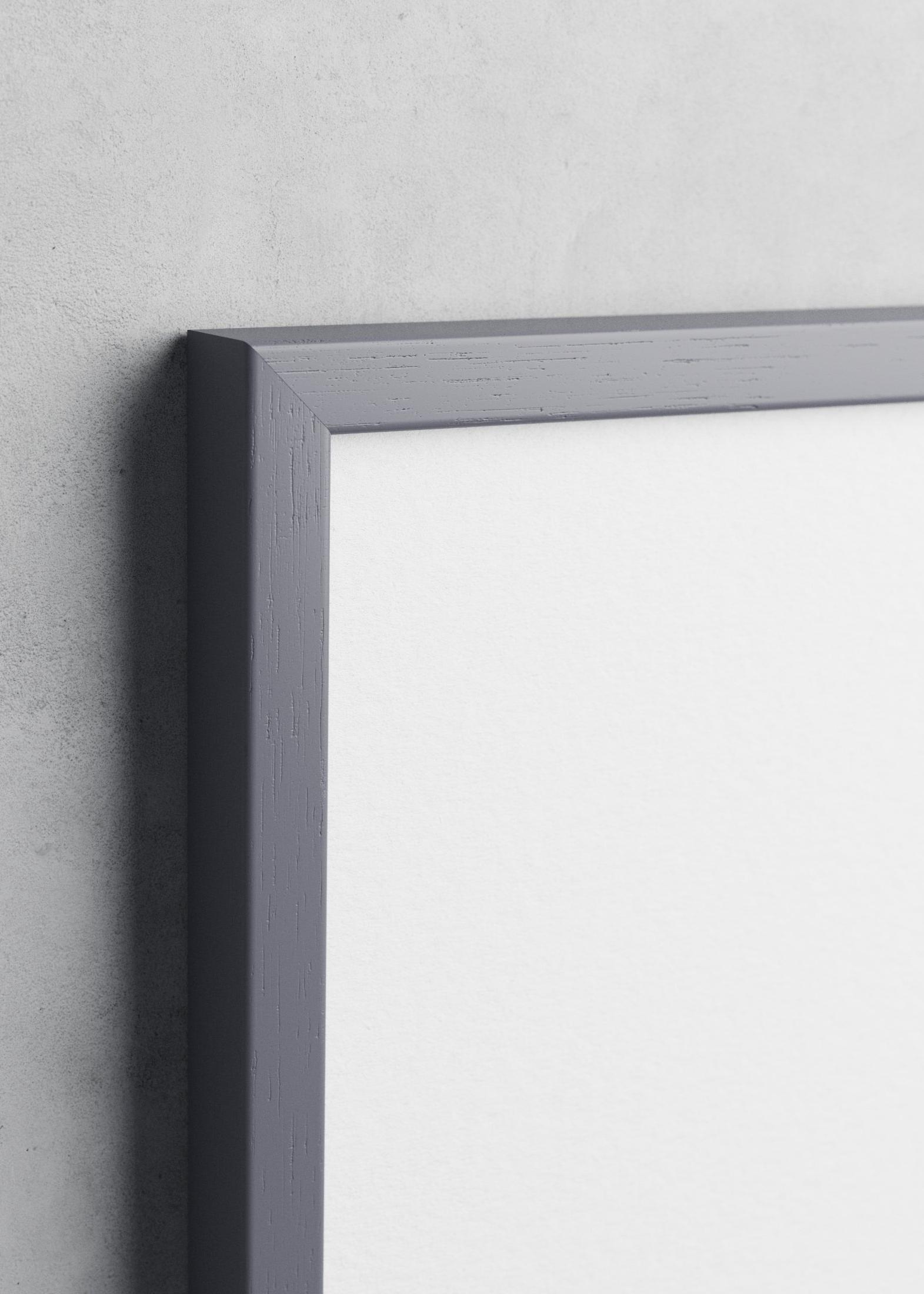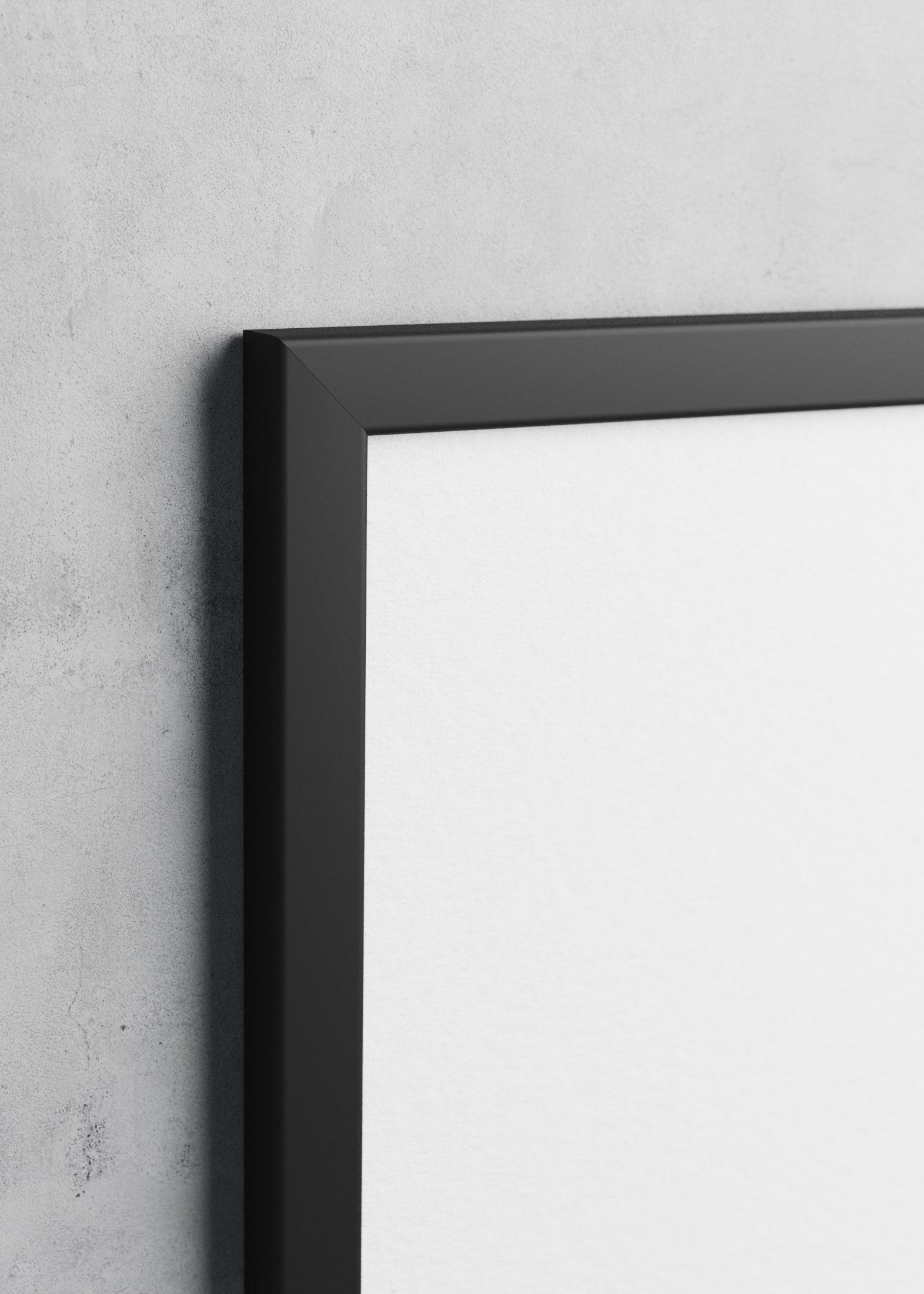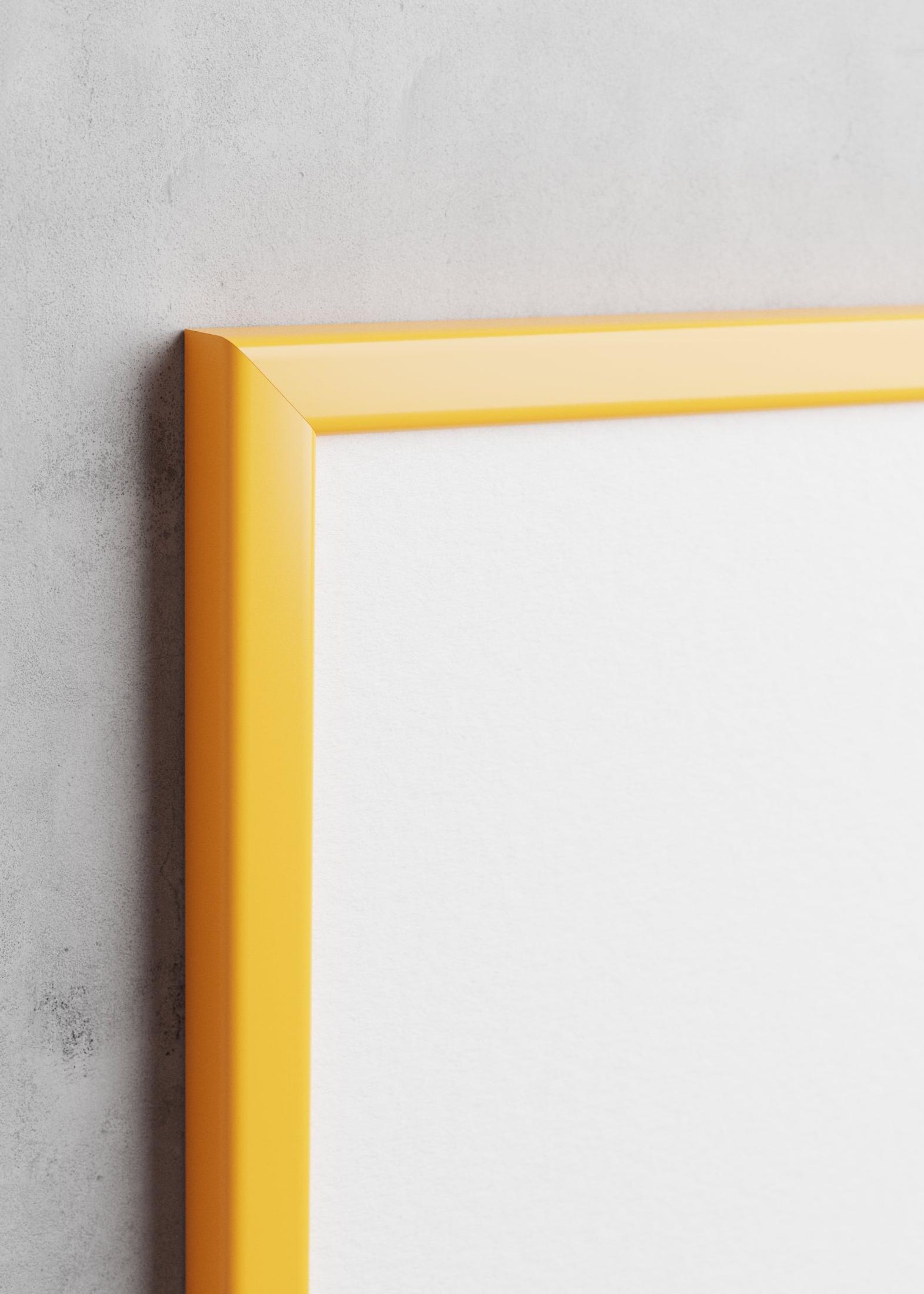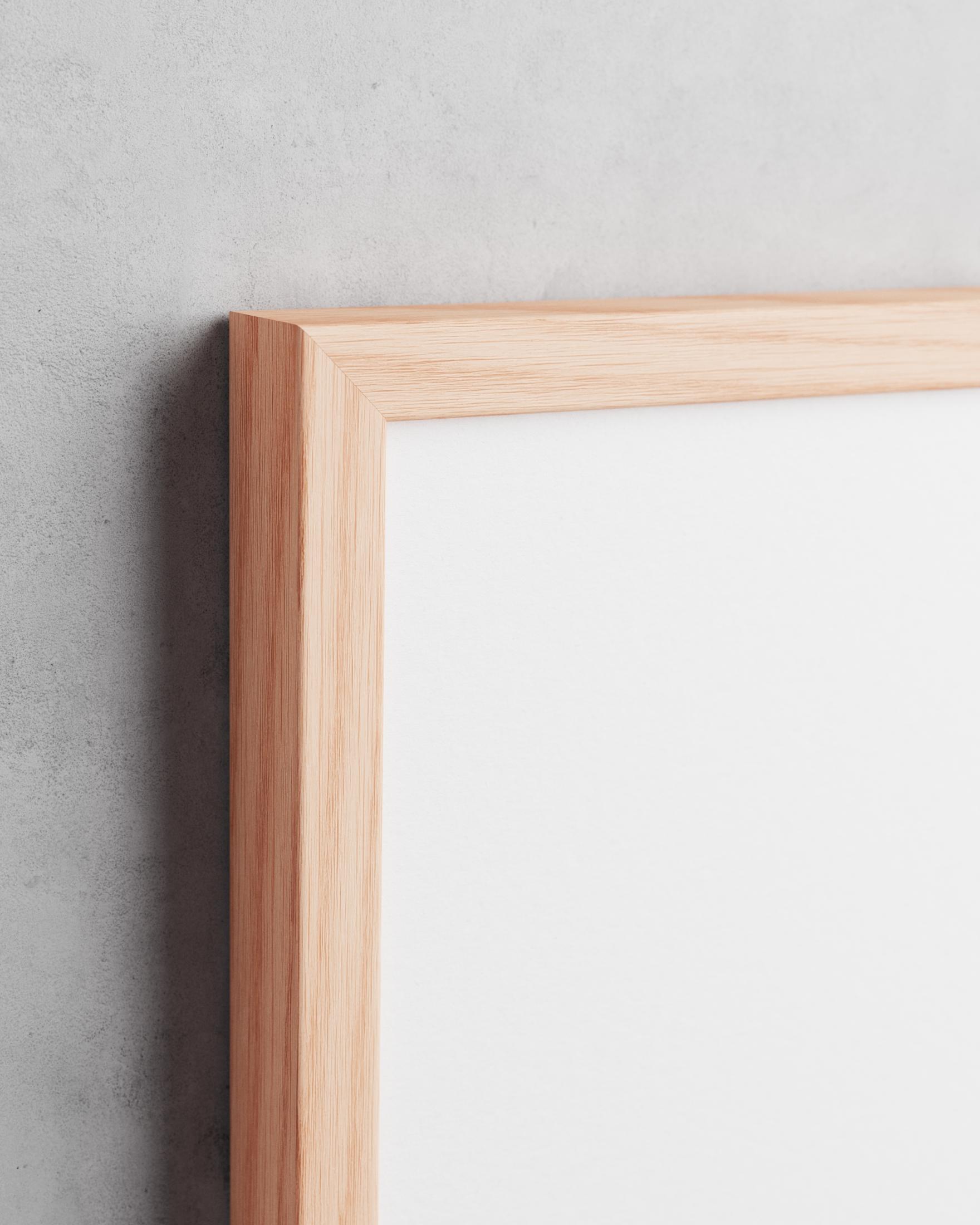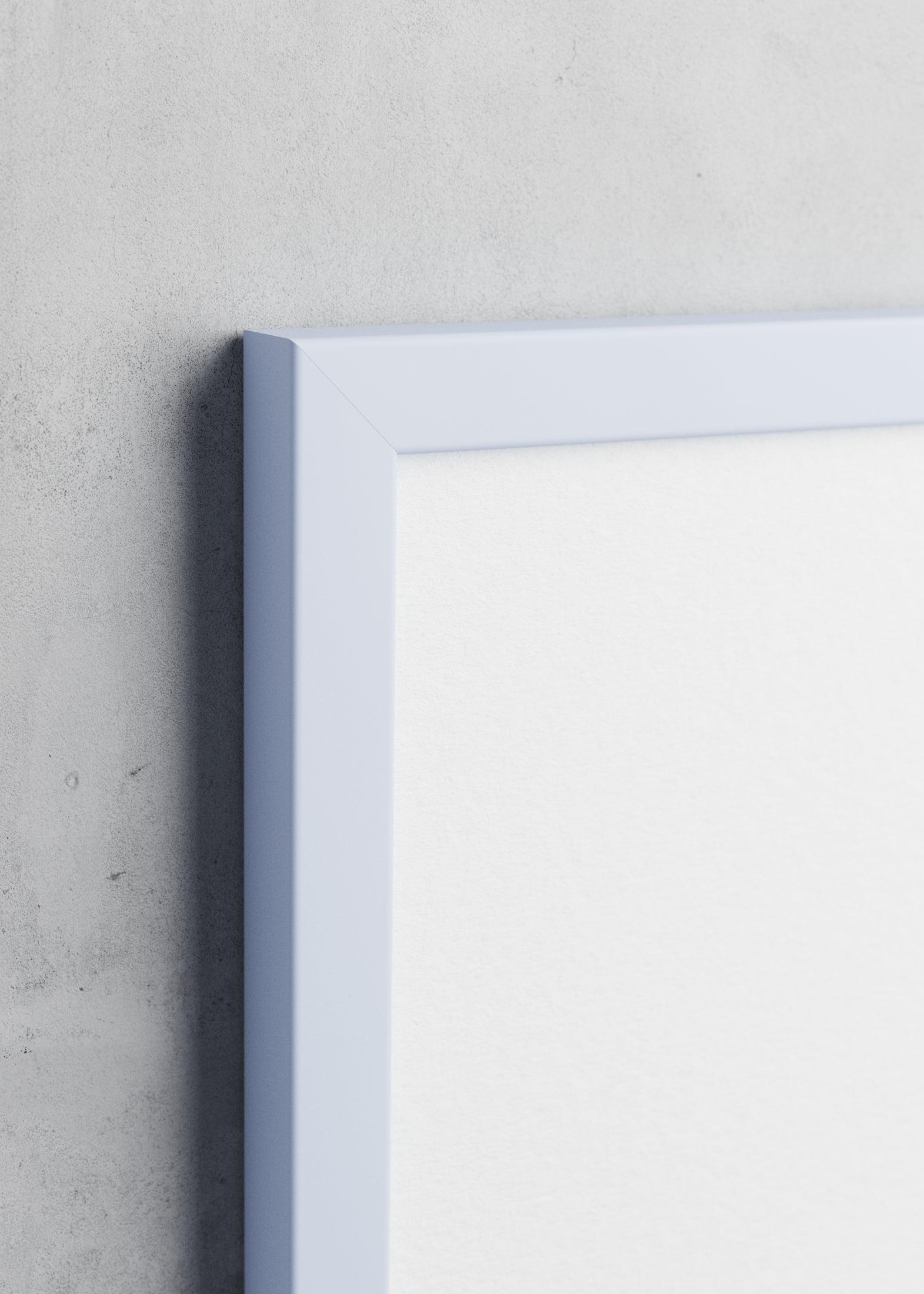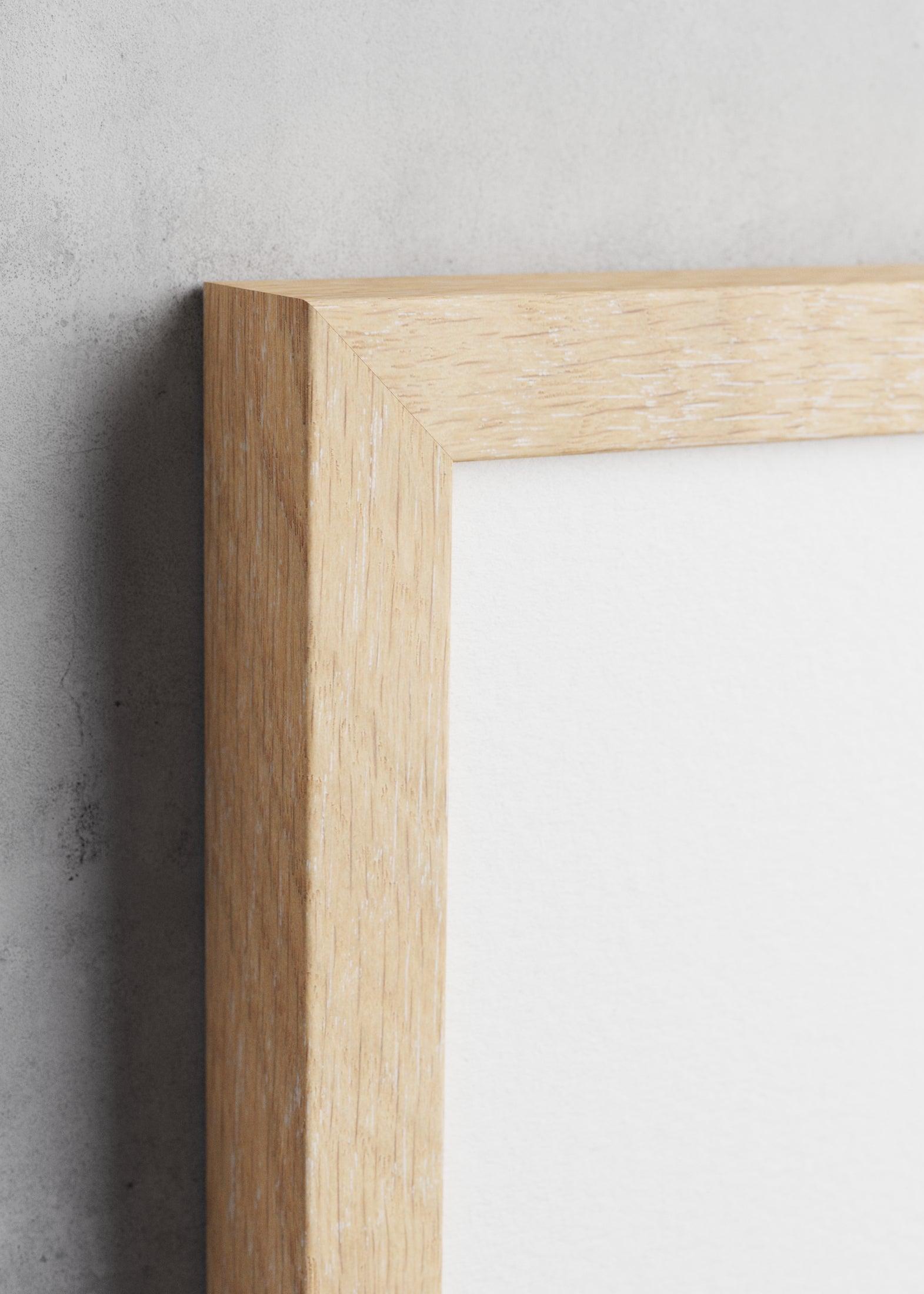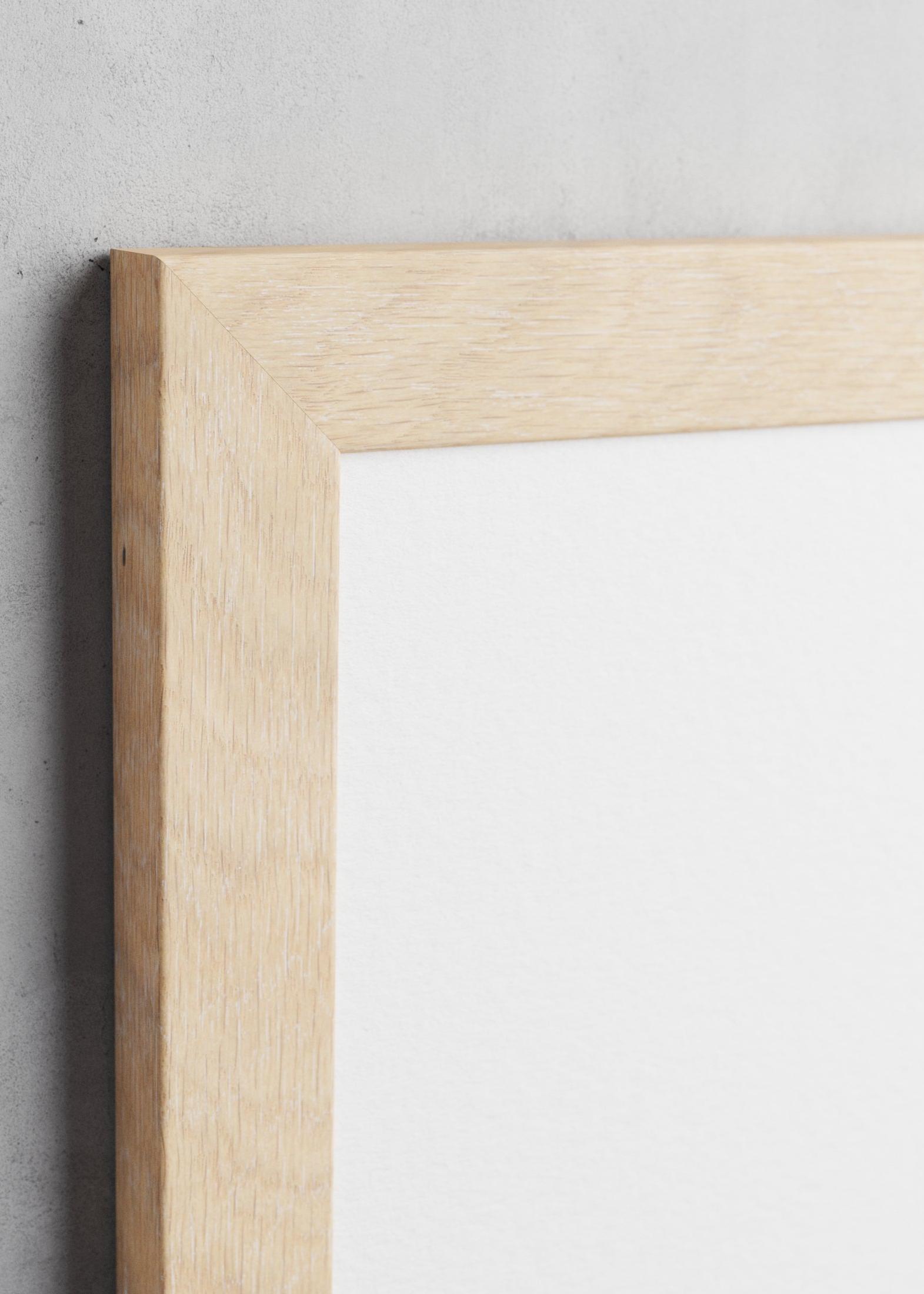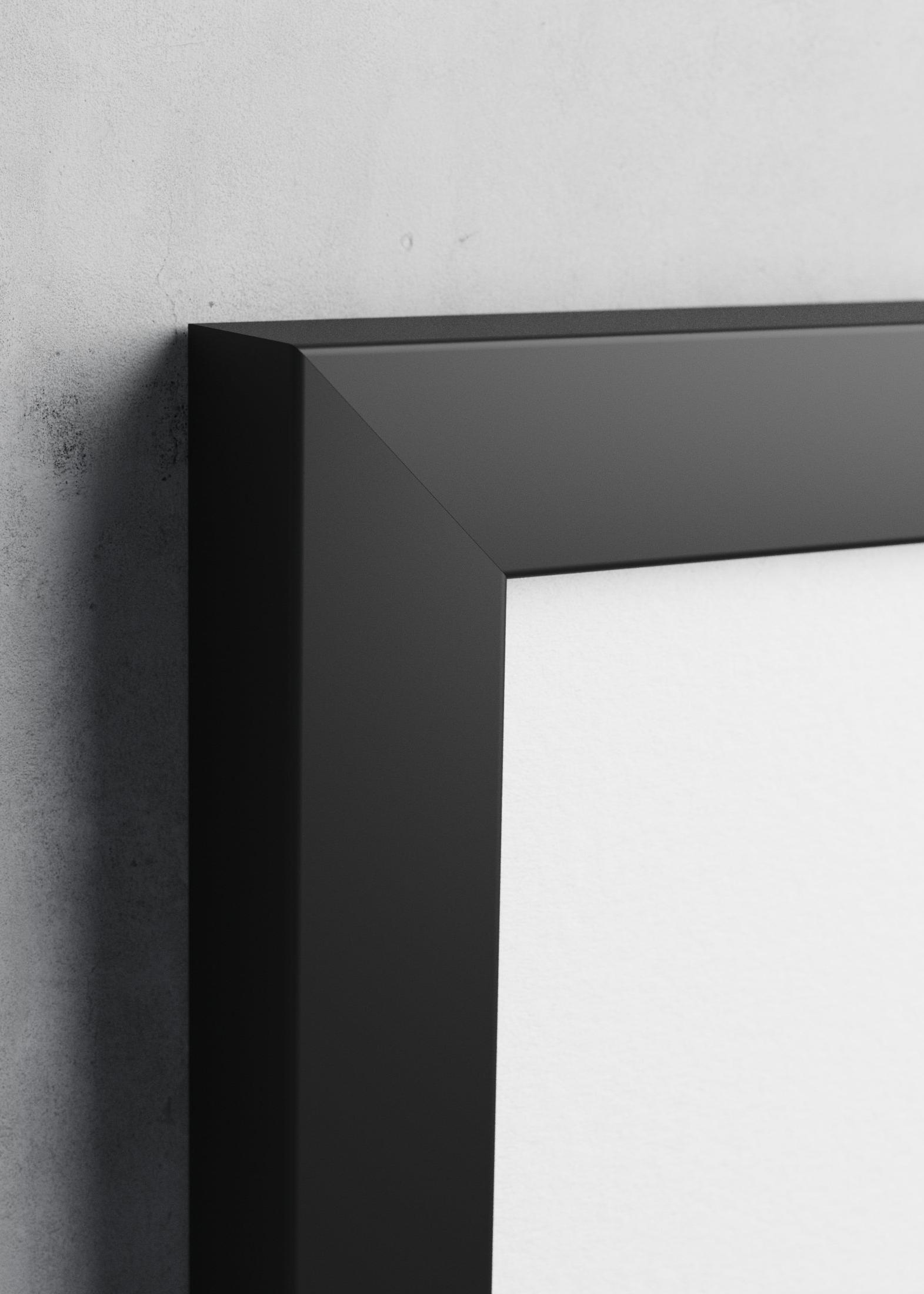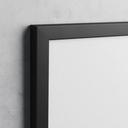
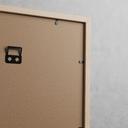
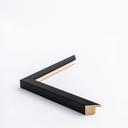
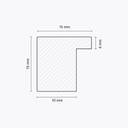
Do your custom frame
The way you need it.
Artwork dimensions27.2 x 43.3 cm
Preview your imagePreview an image inside the frame (optional)
Frame and finishBlack | Copenhagen
Mount (passepartout)Without mount
GlassAcrylic glass (plexi)
Your frame is ready to be added to the cart!
Copenhagen features a clean, balanced 15×15mm profile—our most versatile square moulding.
The Black version is crafted from Ayous wood with a smooth, solid painted finish that offers a bold, modern aesthetic. The black finish creates strong visual contrast and depth, making it ideal for bold compositions, graphic art, and photography. Suitable for artworks up to 70×100cm.
Profile: 15mm width × 15mm depth
Material: Ayous wood
Finish: Painted
Free shipping on orders over 150 EUR
EU delivery in 5–7 days
30-day returns
Made to order in Denmark
Handmade in Denmark – with 80 years of craftsmanship behind every product
All our products are made to order in Bjerringbro, in close collaboration with our long-time partner, By ADJ Denmark. With more than 80 years of experience behind us, modern design meets classic craftsmanship. Every item — from frames to mounts — is produced with care, precision, and materials of the highest quality, directly from our workshop in Denmark.
FAQ's
A common question we get is whether you should provide the exact dimensions of your artwork or add extra millimeters to account for the frame size.
We recommend entering the exact dimensions of your artwork, as the frame will be crafted to fit based on the measurements you provide. The frame includes a “rebate space,” which ensures there’s enough room to insert your artwork without damaging the edges.
If you’re adding extra features like a passepartout, our online builder will automatically adjust the frame dimensions for you. Simply select your desired passepartout size and color in Step 4, and the calculations are handled for you.
A mount (also known as a passepartout) creates space around your artwork within the frame, enhancing its visual presentation. It highlights the artwork and gives the overall composition a more elegant and balanced look – especially for pieces where the colours extend all the way to the edges.
A mount also allows you to frame a non-standard sized artwork in a standard-sized frame – a practical solution if you want flexibility without custom sizing.
However, we generally don’t recommend adding a mount if your artwork already has a white border, as it often creates the same visual effect.
Our white mount is available in sizes up to 120 x 160 cm. The other 10 colours are available up to 81 x 110 cm. If you need a larger size, feel free to contact us at [email protected].
We offer three types of glass: Normal Glass, Anti-Reflection Glass, and Museum 99 Glass. All three are real glass with distinct features to suit your preferences, the lighting in your space, and your budget. Below is a guide to help you choose the right glass:
Normal Glass
Best for: Non-original works or when budget is a priority.
Features:
- Standard 2mm glass.
- High reflectivity, which can be noticeable in dark-toned artworks or frames placed in direct sunlight.
- No UV protection (0% out of 100%).
Recommendation: Suitable for all types of artwork but particularly for prints, posters, or projects where keeping costs low is important.
Anti-Reflection Glass
Best for: Reducing reflections without the higher cost of museum glass.
Features:
- Matte coating that minimizes reflections.
- Works best when the artwork is placed directly against the glass; if there’s a gap, slight blurring may occur.
- No UV protection (0% out of 100%).
Recommendation: Ideal for frames with larger glass surfaces (e.g., larger than A3) where reflections are a concern, but UV protection is not needed.
Museum 99 Glass
Best for: High-value original works and those needing long-term preservation.
Features:
- Industry-leading clarity with minimal reflection.
- Exceptional UV protection (99% out of 100%), preventing fading even in direct sunlight.
- Maintains true color and detail, making it the perfect investment for valuable pieces.
Recommendation: A premium option for anyone seeking ultimate protection and clarity for original artworks, heirlooms, or cherished photographs.
No Glass
Best for: Works that are already mounted on a backing board or don’t require additional protection.
Features:
- No additional covering, allowing the artwork to be displayed naturally.
- Note: Without glass, the artwork is more exposed to dust and damage.
Why Choose Museum 99?
Museum 99 Glass is widely regarded as the best in the industry. With unbeatable UV protection and clarity, it offers long-term preservation for your artwork while eliminating distracting reflections. Plus, by sourcing directly from the manufacturer, we offer the most competitive prices for Museum 99 in Scandinavia.
Almost anything! We’re here to help you frame your cherished memories, so don’t hesitate to reach out to us—even if your request is unique. We’re always ready to explore whether we can offer a framing solution to bring your memory to life and display it beautifully on your wall.
- For our frames, we use different mounting solutions depending on their size: Smaller FramesA single mounting bracket is attached to the back of the frame. You’ll need just one screw to hang it securely.
- Larger FramesTwo sawtooth hangers are mounted at the top corners of the frame. If your frame arrives with corner protectors, lift them to locate the hangers. For these, you’ll need two screws—one for each side.
Our mission is to make framing as simple and enjoyable as possible. That’s why our frames are designed for easy, hassle-free mounting at home. Whether it’s a poster or a cherished piece of art, you’ll find it quick and straightforward to place your work securely in our frames.
What is lamination?
In framing, lamination is commonly used for large images such as posters or panoramic photographs. This process involves adhering the artwork to a backing material, such as special adhesive cardboard, foam boards, thin wood panels, Alu Dibond composite panels, or acrylic glass panels.
Lamination is recommended for posters that have been rolled, creased, or developed ripples over time in an existing frame. By adhering the poster to an acid-free backing board, lamination smooths the surface and significantly reduces the visibility of creases or imperfections in the paper.
important to note:
- Laminated posters can always be reframed, but they cannot be removed from the backing board once laminated.
- We generally do not recommend lamination for original artworks.
Lamination requires either dropping off or shipping the artwork to our store. If shipping, arrangements must be made in advance, and it is done at the customer’s own risk.
Good news – we do! If you’d like to order one of these types of frames, contact us at [email protected] or +45 00 00 00 00 and we’ll help you find the perfect framing solution.
Adding space between the glass and your artwork can enhance the visual experience by creating a more dimensional and “floating” effect. We call it a spacer frame, but the technique has been referred to by many names in the framing industry, such as distance frame, box frame, or aquarium frame. If you’re feeling confused by the terminology, you’re not alone—it’s a common question!
In simple terms, we mount a thin wooden spacer (available in oak, black, or white) measuring either 10 mm or 14 mm between the glass and the backing board.
This allows your artwork to “float” within the frame without touching the glass.important notes:
- Spacer frames are only available with Normal Glass or Museum 99 Glass.
- The price depends on the size of your artwork and the type of spacer chosen. However, we take pride in offering unbeatable prices in this category.
Our frame profiles are made from ayous, pine, and oak – carefully selected to ensure high quality and responsibly sourced materials.
Solid oak is often seen as a premium option, but it’s not always ideal for picture frames, as its hardness can cause corner joints to crack over time. Instead, we use softer woods like ayous and pine, often combined with oak veneer or special surface treatments to ensure durability and a refined finish.
We work exclusively with producers who prioritise craftsmanship and responsible sourcing.
